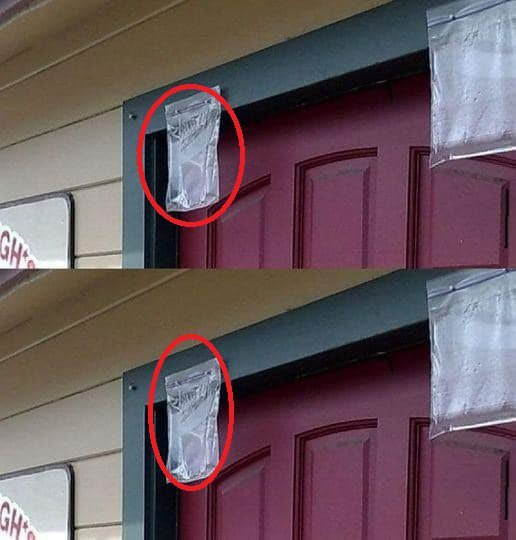ADVERTISEMENT
Bug-Repelling Bags of Water Hung Above Doors: An Unexpected Success Story
Many people have attempted various ways, such as chemical sprays and ultrasonic gadgets, to keep pests at away, but none has been truly effective. But in recent years, a novel and unexpected strategy for insect control—hanging bags of water outside doors—has grown in favor. Despite its questionable reputation as a do-it-yourself hack or an old wives’ tale, this procedure really has considerable scientific backing, making it a top tip for pest management.
Its Foundational Theory
Light refraction is the theoretical basis for the practice of hanging water bags to ward off pests. Proponents of this practice claim that the bags filled with water serve as natural magnifiers, causing flying insects like wasps, flies, and mosquitoes to get confused and scared away by refracting light. It is thought that the water bags’ distorted light patterns make the bugs avoid the area because they think it looks like a predator or other danger.
Unexpected Outcomes from a Simple Setup
The ease of use is a major selling point of this strategy for keeping bugs at bay. Clear plastic bags, water, and a hook to hang them from are all that’s needed to keep pests at bay at doors and other entryways. To maximize the light-refracting effect, some do-it-yourselfers suggest filling gallon-sized plastic bags with water and adding a few reflecting items, such as sparkling coins.
When the bags are full and tied tightly, you might be surprised by how well they work. People who live in houses or enjoy spending time outside have noticed a marked decrease in the number of flying insects that gather near windows and doors. You won’t need as many strong insecticides or insect repellents indoors when you use this all-natural method that doesn’t need chemicals
Research Support:
Despite the abundance of anecdotal evidence from happy users, there is a dearth of scientific research that supports this practice. Nonetheless, the concept that light refraction influences insect behavior is supported by scientific concepts. Disruptions in light patterns can actually discourage insects from specific places, as they frequently depend on visual cues for navigation and predator avoidance.
Continued on next page
